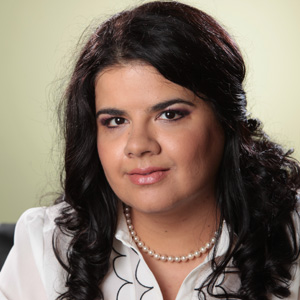Is pasture land disappearing in Romania? When looking at recent legislative changes and media appearances of the Minister Delegate for Energy, one would presume that Romania is rapidly being deprived of specific agricultural land – pastures and/or meadows.
Concerned with the presumed accelerated loss of agricultural land, the authorities have enacted, through a specialised act, Government Emergency Ordinance no. 34/2013, regarding the organisation, management and exploitation of permanent pastures and for the amendment and supplementation of Real estate law 18/1991 (“GEO 34”).
GEO 34 appears to have been urgently needed due to some incapacity of putting into effect of a previous act, law 214/2011 regarding organisation, management and exploitation of pastures (“Law 214”). Law 214 contained inconsistencies that made it impossible to apply and therefore made it necessary for the authorities to remedy the situation, by means of GEO 34. In addition, an explanation of the urgency of GEO 34 was that important EU funds were to be applied for in two days from its entry into force. Of course, the Ministry of Agriculture had a month from the entry into force of GEO 34 to prepare the secondary legislation.
Nevertheless, looking ahead, we must point out the important aspects regulated by GEO 34:
- Its purpose is the regulation of the organisation, management and exploitation of permanent pastures. A permanent pasture is agricultural land that has been used for grazing and growing forage for animals and declared as pasture land. In practice, if land has been declared as pasture land and has remained with this status for five years, then it becomes a permanent pasture, according to GEO 34.
- GEO 34 has a general and uniform coverage, as it regulates all sorts of pastures, whether publicly owned or private, all across Romania.
- The most important restriction – GEO 34 forbids the removal from the agricultural circuit of pasture land. Effectively, this would translate into a complete prohibition to build anything on pasture land.
- This restriction is permanent and is passed to whatever successors, therefore, changing the ownership of pasture land does not allow avoidance of this restriction.
- As expected, there are still some exceptions to this restriction. In several particular cases, the removal of pasture land from the agricultural circuit is allowed:
- for the emplacement of public-interest projects;
- for objectives of national security;
- works which are part of local/county/regional development projects;
- for the emplacement of constructions serving agricultural works;
- for mountain refuges;
- for the emplacement of renewable energy projects, as long as:
- these do not hinder the “good exploitation of the pasture”, and
- these projects have been declared of public utility works of local, county or national interest, by decision issued by the competent authority.
- With all exceptions, come conditions. In case of the works at point 5 above, these are related to maintaining sufficient pasture land for raising animals.Before detailing precisely how this works, we must state that, further to the entry of Romania in the European Union, officially in 2007, the country had to adopt various measures relating to good agricultural and environmental conditions (GAEC, as referred to in EU Regulations) as a pre-accession obligation.One of these obligations was related to the protection of permanent pastures, for both environmental reasons, as well as for the support of agriculture – raising animals.To this end, at the date of 1 January 2007 Romania declared an overall permanent pasture land surface of around 4.5 million hectares, composed of the surfaces declared in turn by all the administrative units that compose Romania (communes – especially, cities and the state).
Nowadays, if an interested investor would want to build anything on pasture land, which would be understandable, given that such land is usually clear, flat land, without trees or ruins of buildings on it, located not too far from communes’ utilities, not to close to peoples’ houses, than this investor should check with the competent authorities who is the owner of the pasture land and what was the declared surface of pasture land in 1 January 2007.
Further, this investor would have to convince and prove to the Local/County Council or Romanian Government that his project is of public utility and would benefit the local, county or national interest so much that it a decision is given in this respect.
In continuation, the next hurdle is the removal of the pasture land from the agricultural circuit, which must not result in the reduction of the above-mentioned surface of pasture land, as it was declared in 2007, for the respective administrative unit.
In case the removal from the agricultural circuit of this pasture land would result in the reduction of the respective surface, the investor must find, acquire and reintroduce in the agricultural circuit other land surfaces, to balance this reduction.
Here, a problem may arise. GEO 34 does not specify whether one who does not find any land in the respective administrative unit, may buy and reinstate land surfaces as pasture land in other administrative units, e.g. if one does not find any land to buy in a commune, would he be allowed to go and purchase land from neighbouring communes.
Or, going further with the example, can one buy, or already own land, somewhere else in Romania, straight across the country, like, wanting to build near Bucharest and reinstating pastures in Satu Mare or Suceava?
This problem is not clear, because GEO 34 makes only a short mention about this. It is specified that the reinstating of land is made prior to the removal from the agricultural circuit, in a manner that the surface of pasture land does not decrease at a local, county or national level, as the case may be.
Therefore one solution would be in the sense that we should look at the overall surface declared by the local, county or national level and be allowed to reinstate land in other places in Romania. The principle is that we should be able to do what is not expressly forbidden.
Another solution would be that the overall surface must be maintained at the same level, local, county or national. Where no land can be found, it would mean that no pasture land can be removed from agricultural circuit and no constructions and investments made.
This would be the strictest interpretation and probably the safest.
Further to the publication by the Ministry of Agriculture of the official methodology for removal of pasture land from the agricultural circuit, which has not happened yet, we may have a clearer position on this matter.
There is already a draft methodology for removal of pasture land from the agricultural circuit (“draft methodology”) published for public debates on the website of the Ministry of Agriculture, but it is not official yet.
Should this draft be officially adopted, it would still not be that clear. The draft methodology makes the addition that it is allowed to have the land reinstated composed of one or more “different emplacements”. The matter of whether the land to be reinstated as pasture must be emplaced in the same commune or even county is not dealt with as the draft methodology states basically the same words (e.g. the pasture surface must remain the same at a local, county or national level as the case may be), therefore, interpretations remain as above.
- The rest of GEO 34 deals with the use, management and actual exploitation of pasture land by the authorities and by those raising animals and the various conditions and with the sanctions imposed in cases when GEO 34 is not observed.
- Going further into the draft methodology, we could make other constructive and/or interesting remarks:
- It deals almost exclusively with pasture land situated in the extravilan of localities. This matters because one can mostly build only on land which is in the intravilan, and this restriction is from around 1991. Therefore, the draft methodology covers mostly cases which are not practical.
- Another would be that for most projects, whether real estate or renewable energy or other, it is necessary and advisable to obtain a PUZ from the relevant authority (zonal urbanism plan with special urbanism derogations specifically for the project) prior to and as a condition of starting an investment.An effect of the issue of a PUZ is that the surface of land covered by it enters the intravilan area. It does not lose its quality of agricultural land, pasture land, but it falls under different provisions of the draft methodology.The draft methodology states that the removal from agricultural circuit of pasture land situated in the intravilan is made once the building permit is obtained, in cases of pasture land introduced in the intravilan up to 23 November 2012.This is somewhat retroactive and unclear. It is not specified what happens with pasture land situated in the intravilan before the said date that has been removed from the agricultural circuit with payment, or what is to happen to such pasture land that has not been removed from the agricultural circuit.
Also, in an equivocal and circular manner, for pasture land introduced in the intravilan after 23 November 2012, the draft methodology simply mentions that the removal from the agricultural circuit shall be made in the conditions prescribed by law, without identifying the “law” and with disregard to the fact that it should be the “law” that regulates this.
- A final comment, for now, would be that the draft methodology is at times in conflict with GEO 34 which it should help explain and apply.In one case, GEO 34 states that other land can be recovered and reintroduced as pasture land, in exchange for the surface of pasture land removed from the agricultural circuit, at the latest by the time set in the approval for the definitive removal. The draft methodology reduces this term. It states that the recovery must be done by the date of applying for the approval for removal.In another example, the draft methodology forbids the emplacement of constructions only on pasture land situated in the extravilan area, an area slightly less than that of GEO 34 which covers all areas of pasture land, not just extravilan areas.
On a related document, we must point out that the draft application norms for GEO 34 deal only with the use and exploitation matters, without going into the problem of removal of pasture land from the agricultural circuit.
it is also worth mentioning that if the draft application norms are adopted in their current form, they will have retroactive effects.
To be more precise, it is stipulated that pasture land which was registered as such in 1 January 2007 and was subsequently removed from the agricultural circuit or had its functionality as pasture changed, must be reintroduced as pasture land, or other land must be reintroduced in the agricultural circuit as pasture land, in order to not affect the surface of pastures declared in 2007. This is an obligation of the “holders of the pasture land”. No clear methodology for this is yet in discussion.
- Such category of “holders of pasture land” is not defined, therefore, imprecise and unclear. In this way, various interpretations are possible and the “holder” may be:
- the owner of the land that changed its use from pasture land into other type of agricultural land or who removed it from the agricultural circuit, and still continues to be the owner;
- only the “previous” owner, that made such changes to the land and further sold the land, due to the fact that the person who bought the land did not acquire pasture land, and does not now hold pasture land;
- the “current” owner, who bought land that was previously, at some point, pasture land.
- both the “previous” and the “current” owner, as a joint obligation.
Unfortunately, although some are extreme, these possibilities exist.
To summarise, pasture land has a clear economical value, both for agriculture and the protection of the environment, as well as for its construction potential.
There are ways to get pasture land into a legal buildable condition, however, there are hurdles to go through, some of which are not yet clear and structured. The Government, should it consider some advice, could make matters clearer for everyone, including the various authorities involved in the process.
The change in the regime of the pasture land did accomplish what it set out to do, it scared off many investors in renewable energy projects, but also dragged along real estate developers, therefore, just as an example, there will still be some time before any Formula 1 racetrack is built near a major city in Romania. As regards the protection of the interest of people who raise animals, we have no signs yet.





